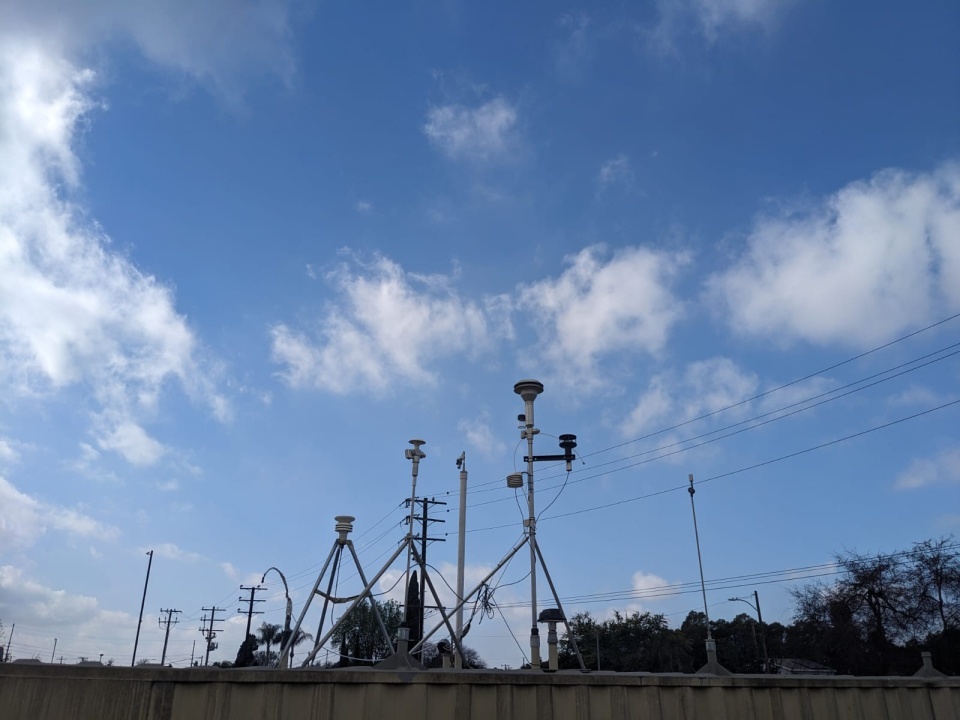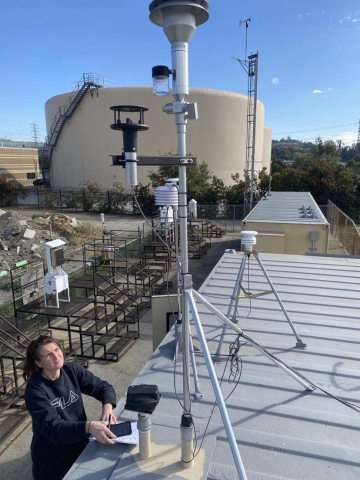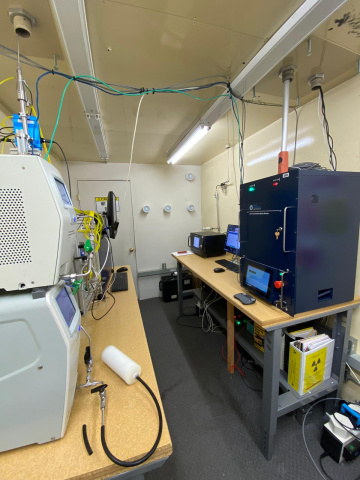LA Fires Trigger Temporary Spike in Airborne Lead Levels

The Atmospheric Science and Chemistry mEasurement NeTwork (ASCENT) site collects real-time data during the Los Angeles wildfires. Courtesy: Haroula Baliaka
As the Los Angeles fires quickly spread starting Jan. 7, with wind gusts approaching 100 mph, scientists observed a 110-fold rise in airborne lead levels. This spike had receded by Jan. 11.
The fires enabled the first real-time data on airborne lead, thanks to a pioneering air quality measurement network known as Atmospheric Science and Chemistry (ASCENT), a nationwide initiative funded by the National Science Foundation, operating in 12 sites across the U.S.
ASCENT measured tiny particles smaller than 2.5 micrometers in diameter (PM2.5) — small enough to enter the lungs and bloodstream. Unlike typical wildfires that burn natural materials such as grass and trees, the Eaton Canyon and Palisades fires burned through infrastructures like homes, including painted surfaces, pipes, vehicles, plastics, and electronic equipment. This raised concerns about the toxicity of these particles in the air, especially since many of the buildings were constructed before 1978, when lead paint was still commonly used.
Lead is a toxic air contaminant that poses significant health risks, particularly for children, who are more vulnerable to its neurodevelopmental effects. While chronic lead exposure is well-documented, the effects of short-term spikes, like those recorded during these fires, are less understood.
“Our work through ASCENT,” said Sally Ng, Georgia Tech’s Love Family Professor of Chemical and Biomolecular Engineering and Earth and Atmospheric Sciences and the network’s principal investigator, “has provided us with new insights into the air we breathe, with unprecedented levels of detail and time resolution. Beyond the mass concentration of PM2.5 that is typically measured, we are now able to detect a wide range of chemical components in the aerosols in real time, to better understand and evaluate to what extent one is exposed to harmful pollutants.”
Investigators used several instruments to obtain hourly measurements at the ASCENT monitoring site in Pico Rivera, approximately 14 miles south of the Eaton Canyon fire, to assess atmospheric lead during the wildfires.
“Our findings showcased the importance of having real-time measurements of the chemical species that comprise particulate matter,” said California Institute of Technology Ph.D. candidate in atmospheric chemistry and ASPIRE researcher Haroula Baliaka. “During the LA fires, we provided the public with timely information about what they were breathing and how air quality evolved in the days that followed.”
This research has been published in the CDC’s Morbidity and Mortality Weekly Report.
Additional Media

Investigators used measurements recorded hourly at the ASCENT monitoring site in Pico Rivera, approximately 14 miles south of the Eaton Canyon fire, to assess atmospheric lead during the Eaton Canyon and Palisades fires. Courtesy: Haroula Baliaka

The ASCENT facility in Pico Rivera is equipped with a range of aerosol measurement instruments, including the Aerosol Chemical Speciation Monitor (ACSM) for non-refractory aerosols, Xact for detecting trace metals, Aethalometer for assessing black/brown carbon, and the Scanning Mobility Particle Sizer (SMPS) to analyze aerosol size distribution and concentration. Courtesy: Haroula Baliaka